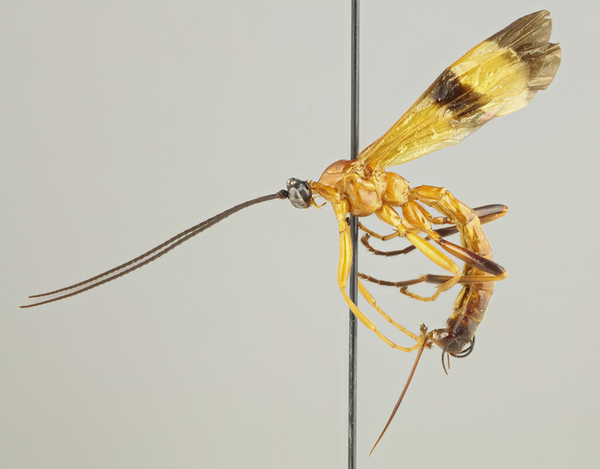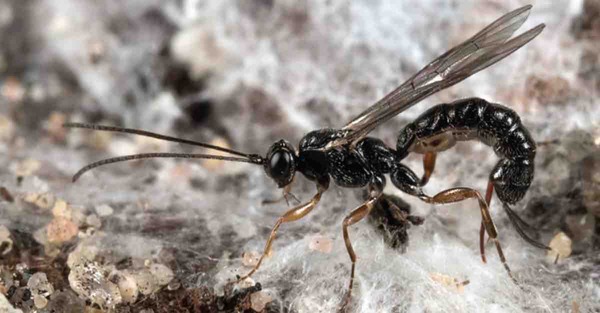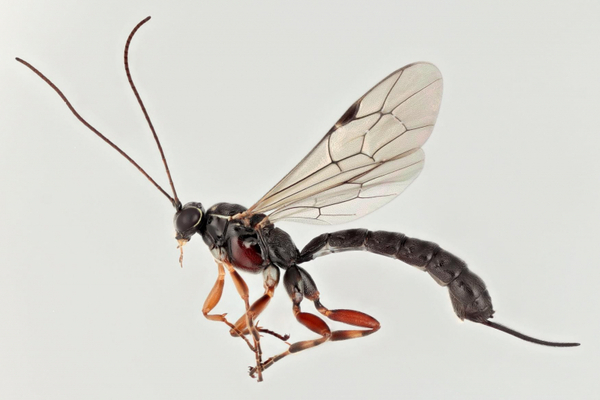The giant ichneumon wasp is a fascinating example of the complexity and beauty of nature’s predatory and parasitic relationships. Known for its impressive size, long ovipositor, and specialized lifecycle, this wasp belongs to the family Ichneumonidae, a diverse group of parasitoid wasps. With its distinctive appearance and unique method of reproduction, the giant ichneumon wasp has earned both scientific interest and popular intrigue. This article explores the biology, behavior, and ecological significance of this remarkable insect, often misunderstood due to its formidable appearance.

Giant ichneumon wasps (members of the genus Megarhyssa) are striking in appearance. Females, in particular, are known for their extraordinarily long ovipositor, which can be up to five inches in length—sometimes even longer than the wasp's own body. This specialized appendage is used to lay eggs deep within wood, specifically in tree trunks or logs where their preferred host resides. While the wasp’s appearance may evoke fear due to its size and stinger-like ovipositor, it is important to note that giant ichneumon wasps are harmless to humans. They do not sting or bite, despite their menacing look.
The body of the giant ichneumon wasp can range in length from 1.5 to 2 inches, with females typically larger than males. They are usually black or brown in color, with yellow or orange markings on their body and legs. Their wings are transparent with a slight brown tint, and they have long, thin antennae. These wasps are often seen on the surface of decaying wood, where they hunt for the larvae of their host species.
The life cycle of the giant ichneumon wasp is intimately tied to another insect species: the horntail wasp (Urocerus), also known as wood wasps. The female giant ichneumon uses her long ovipositor to drill into wood, where horntail wasp larvae are burrowed deep inside. Once she reaches the larvae, she deposits her eggs directly onto the host. This process can take several hours as the female skillfully navigates through the wood fibers using her ovipositor.
The ichneumon larvae, once hatched, begin their life as parasitoids. They feed on the horntail larvae, consuming them slowly from the inside out. Unlike predators that kill their prey immediately, parasitoids like the ichneumon wasp keep their hosts alive for a prolonged period, ensuring a fresh food supply. The wasp larvae eventually pupate within the wood, emerging as adults after completing their development.
This unique lifecycle highlights the wasp’s specialization and evolutionary adaptation. The relationship between the giant ichneumon and the horntail wasp is an example of parasitism, where one organism benefits at the expense of another. However, it is also part of the natural balance of forest ecosystems, helping to control populations of wood-boring insects that can damage trees.
One of the most intriguing features of the giant ichneumon wasp is its ovipositor, a complex and delicate organ that functions as both a drill and an egg-laying tube. The ovipositor is composed of three filaments. Two outer sheaths protect the central filament, which acts as the actual drill. Using specialized muscles and mechanical pressure, the wasp can penetrate wood to depths of several inches. Tiny teeth on the ovipositor’s tip help cut through the wood’s tough fibers.
What makes this process even more fascinating is that the female wasp can detect the presence of horntail larvae within the wood, often sensing their movements or the vibrations they create as they chew through the wood. This incredible ability allows the ichneumon to target specific hosts, ensuring that her offspring have the necessary resources to thrive.
Moreover, research has shown that the ichneumon wasp’s ovipositor is also equipped with a specialized secretion that helps to soften the wood, making it easier to penetrate. This biological drill, combined with chemical assistance, is a marvel of evolutionary engineering, allowing the wasp to access larvae buried deep within tree trunks.

Though the giant ichneumon wasp might seem like an intimidating predator, it plays a crucial role in maintaining ecological balance. By parasitizing horntail wasps and other wood-boring insects, giant ichneumon wasps help regulate populations of pests that could otherwise cause significant damage to trees. This natural form of pest control is especially important in forested areas, where infestations of wood-boring insects can weaken or kill trees, leading to broader environmental impacts such as habitat loss and increased fire risk.
The presence of ichneumon wasps is, therefore, an indicator of a healthy, functioning ecosystem. They are part of a complex web of interactions between plants, herbivores, and predators that ensure biodiversity and the sustainability of forest habitats.
Due to their large size and long ovipositor, giant ichneumon wasps are often mistaken for dangerous insects. Some people believe they can sting humans with their ovipositor, but this is a misconception. The ovipositor is used solely for egg-laying and is not a stinger. Giant ichneumon wasps are completely harmless to humans and pets; they do not defend themselves aggressively like some other wasp species, such as yellow jackets or hornets.
Another common misconception is that all ichneumon wasps are large and visible. In reality, the Ichneumonidae family is incredibly diverse, with over 100,000 species worldwide. Many ichneumon wasps are small and inconspicuous, playing equally important roles in various ecosystems.

Giant ichneumon wasps, like many insect species, face threats from habitat destruction, pesticide use, and climate change. As forests are cleared for agriculture or urban development, the habitats of both ichneumon wasps and their hosts are diminished. Additionally, the use of insecticides in forestry and agriculture can disrupt natural predator-prey relationships, leading to imbalances in insect populations.
Conservation efforts focused on preserving forest habitats and promoting sustainable forestry practices are essential for maintaining populations of beneficial insects like the giant ichneumon wasp. Public education is also important in dispelling fears and misconceptions about these harmless and ecologically valuable insects.

The giant ichneumon wasp is a fascinating example of the complexity and beauty of nature’s parasitoid relationships. Its specialized lifecycle, remarkable ovipositor, and role as a natural pest controller make it an important part of forest ecosystems. While its size and appearance may cause alarm, the giant ichneumon wasp is a harmless and beneficial insect that plays a crucial role in maintaining the health of our natural world. Understanding and appreciating this insect helps us recognize the intricate balance of life that exists in ecosystems across the globe.
animal tags: Giant-Ichneumon-Wasp
We created this article in conjunction with AI technology, then made sure it was fact-checked and edited by a Animals Top editor.